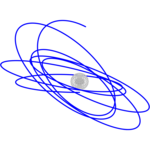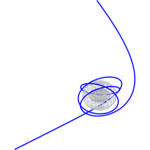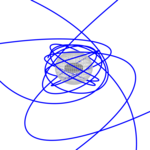Black Holes
Black Holes
Black holes
More than 100 years ago, Albert Einstein explained gravity to us with the general theory of relativity. Even today, the theory of relativity is still used, for example for the satellite navigation system GPS. Einstein's theory predicted incredible objects: black holes whose gravity is so strong that not even light can escape them. Something that has fallen into a black hole never comes out again. Observations with telescopes later confirmed that black holes are real.
But how do you study black holes? After all, they are very far away from us and difficult to observe. Stars orbiting a black hole, on the other hand, are easy to observe. From the orbits of the stars, one can calculate properties of the black hole, such as its mass. From the point of view of theoretical physicists, orbital curves, the so-called geodesics, are therefore particularly interesting. For models of black holes in many physical theories, one can calculate orbital curves of objects that orbit around the black holes. This allows us to find out a lot about the nature of black holes.
Gravitation still poses many unsolved riddles for us today. Einstein's theory of relativity does not quite fit with quantum mechanics. For this reason, alternative theories of gravity are also being researched; many of these theories even assume a higher-dimensional world. Most alternative theories are complicated, so that only numerical models can be created. The study of black holes in these theories helps us to better understand gravity.
If you are interested in writing a thesis in this or a similar field, please contact Prof. Dr. Jutta Kunz, Dr. Burkhard Kleihaus, Dr. Jose Luis Blazquez or Dr. Saskia Grunau.



